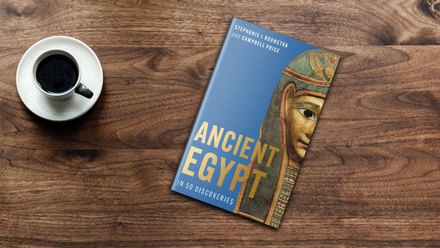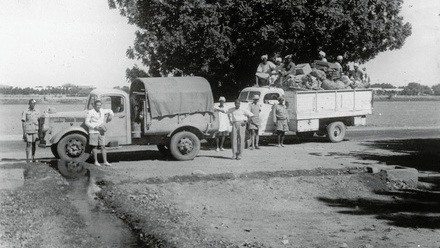Centenary Awards 2010-11
Jenny Cromwell has recently been in Copenhagen to study a series of unpublished Coptic documents in the University's collection. The project is funded by the EES through the Centenary Fund and Jenny has sent the following summary of the first phase of her work.
"I arrived on Sunday 27 February, ready to start my first week’s work on the Coptic collection at the University of Copenhagen, bright (at least by Danish winter standards) and early the following morning.
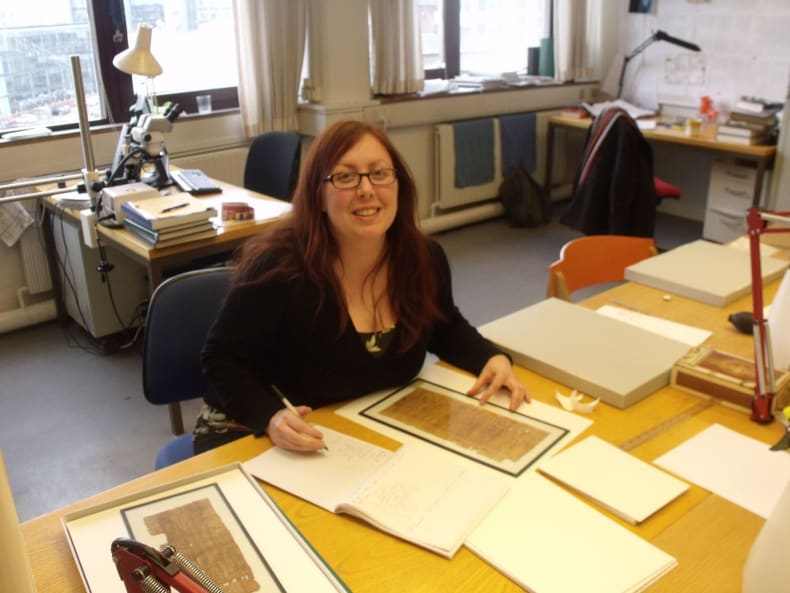
Jenny hard at work in the papyrus collection.
The Coptic material is housed in the University, not the Glyptotek (the museum of ancient and modern art). Here, it is split over two collections: Papyrus Carlsberg (in the Carsten Niebuhr Institute of Near Eastern Studies), which is most famous for the Demotic texts from the Tebtunis temple archive, and Papyrus Haunienses (in the Department of Greek and Latin, in the SAXO Institute).
Only a small number of Coptic texts from the Papyrus Carlsberg collection have been published to date, and all of these are literary, including a pocket-sized medical codex. None of the Hauniensis texts have been published, and many have not even been studied as they were only discovered last year (2010) by Kim Ryholt, the curator of the Carlsberg collection. The majority of the unpublished items are non-literary in nature, which is my main area of interest.
When Kim Ryholt found the latter, they were folded and unreadable. These were conserved and mounted on glass plates at the end of 2010 by Leyla Lau-Lamb, from the University of Michigan, and Thomas Christiansen, from the Insitute in Copenhagen (pictured below, in full conservation mode). They can now be studied for the very first time.
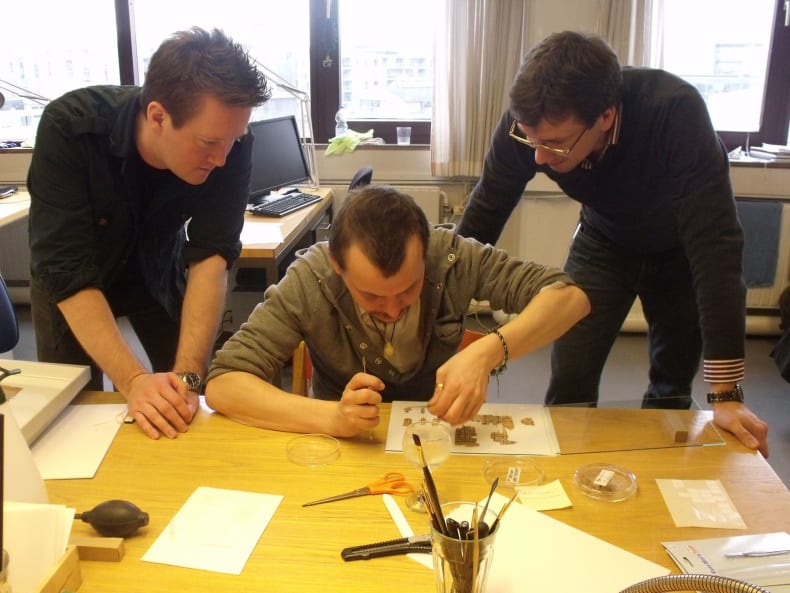
Thomas hard at work (here on a late hieroglyphic text), being watched over by Fred Hagen (left) and the curator of the collection Kim Ryholt (right).
My main task for this first visit was the examination of the material, together with the production of preliminary transcriptions and descriptions of the texts, and the procurement of high quality scans of the material, so that I can work on them while away from Copenhagen.
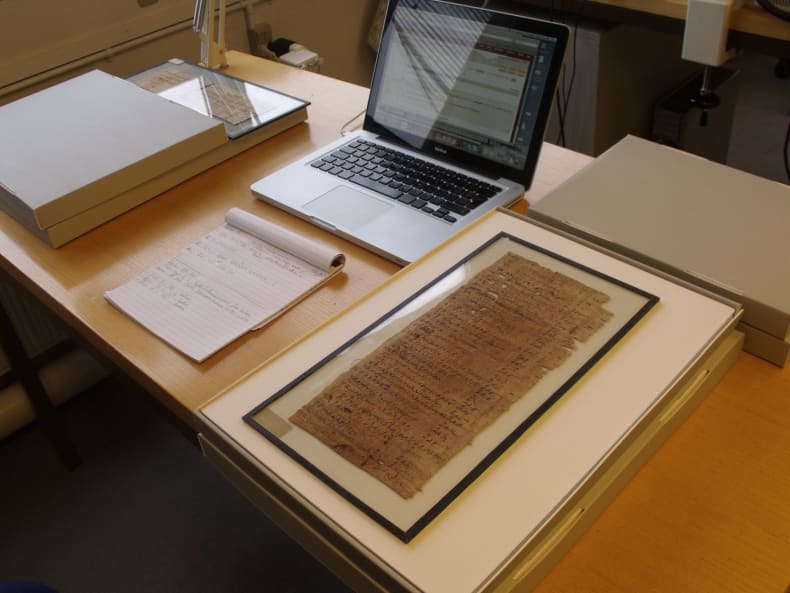
Jenny’s desk: set up to type transcription notes. On the right is the best preserved item: two pages of an account book, P.Hauniensis 1.
The texts were acquired in several lots. Prof. Pedersen purchased the first in 1920/1 for the Royal Library, before they were transferred to the University of Copenhagen in 1922. Later purchases were made by the Carlsberg Foundation by Prof. Schubert in 1929/30 and then Prof. Zucker in 1931. The earliest acquisition was purchased on the market at Gebelein, together with Demotic texts that in fact refer to the site as well. Significantly, then, the provenance of these items seems pretty certain. This makes these texts particularly important as hardly any Coptic texts from here are known: four texts are listed on the online database Trismegistos, and all of these are on leather, meaning that this collection is unique!
My first analysis of this work is very promising! Most of the texts are concerned with financial matters: one manuscript preserves two complete pages of an account ledger, while several more fragmentary texts mention taxation. Even many of the letters (most of which are not complete) concern money, in some capacity (e.g. money lending). These texts are certainly from a monastery, based on the amount and type of titles found, including reference to a monastery of Apa Pshoi, which requires further investigation. One of the shortest, but most significant texts, begins with the phrase peneiwt petshai ‘it is the Father who writes’ (orders from an elder of a monastery). The late Sarah Clackson has worked extensively on texts beginning with this formula and argues that they specifically derive from the monastery of Apa Apollo at Bawit (near Hermopolis). The Carlsberg material might well lead to significant revisions of this conclusion!
I believe we are dealing with the contents of the economic administration of a monastery in the 7th and 8th centuries (based on palaeographic similarities with similar bodies of texts from other monasteries).
The rest of the collection includes a few unusual items, the nature of which are yet to be determined, for example: a piece on paper (and so of a late date - after 10th century) written in Arabic, Greek and Bohairic Coptic (the northern dialect); another piece written on paper covered in plaster; and a large sheet of papyrus with an illustration of a monk (shown below) holding a cross and a censor in each hand, flanked by two animals with crosses on their heads, and with what may be a magical text below him (what exactly is written still needs to be determined).
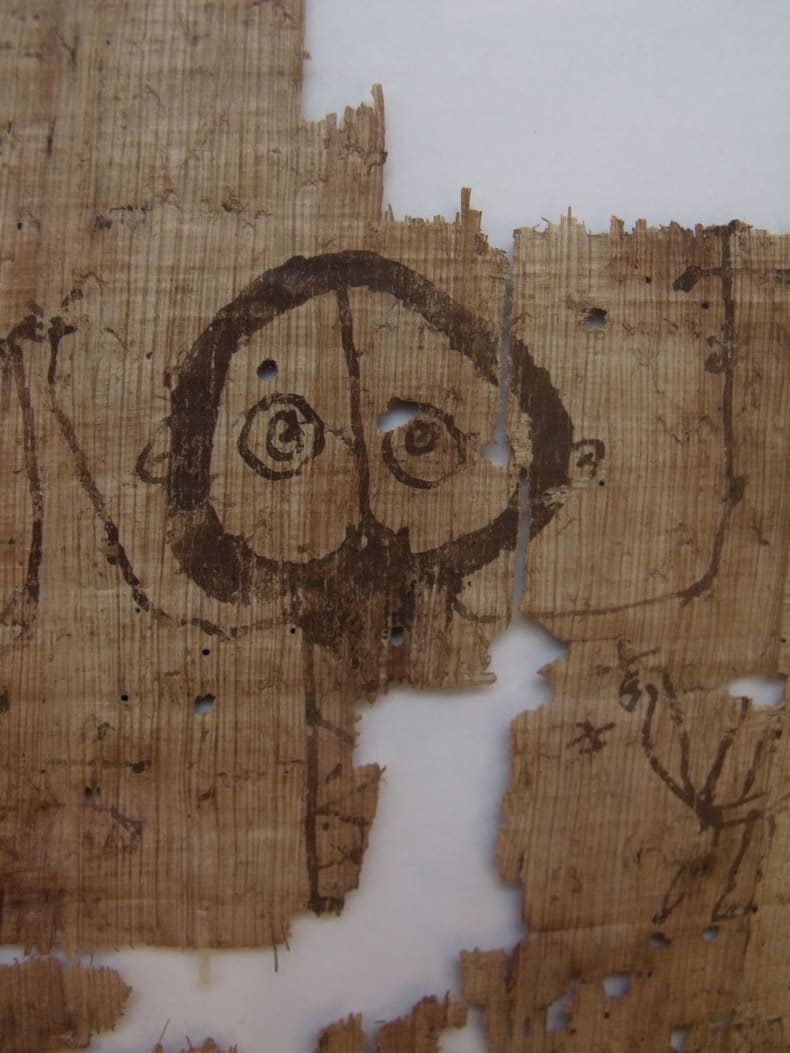
The monk of P.Carlsberg 443.
This was a very exciting and successful week at the collection. There is sufficient material, which is of a high enough quality, to produce a full monograph of the non-literary texts (the aim at the moment is for this to appear in the Papyrus Carlsberg series), supplemented by isolated articles about the literary items. My most immediate task is to provide a list of all the Coptic texts for the website of the Carlsberg collection. This will be the first place to look for updates about what the material consists of, as this will appear shortly.
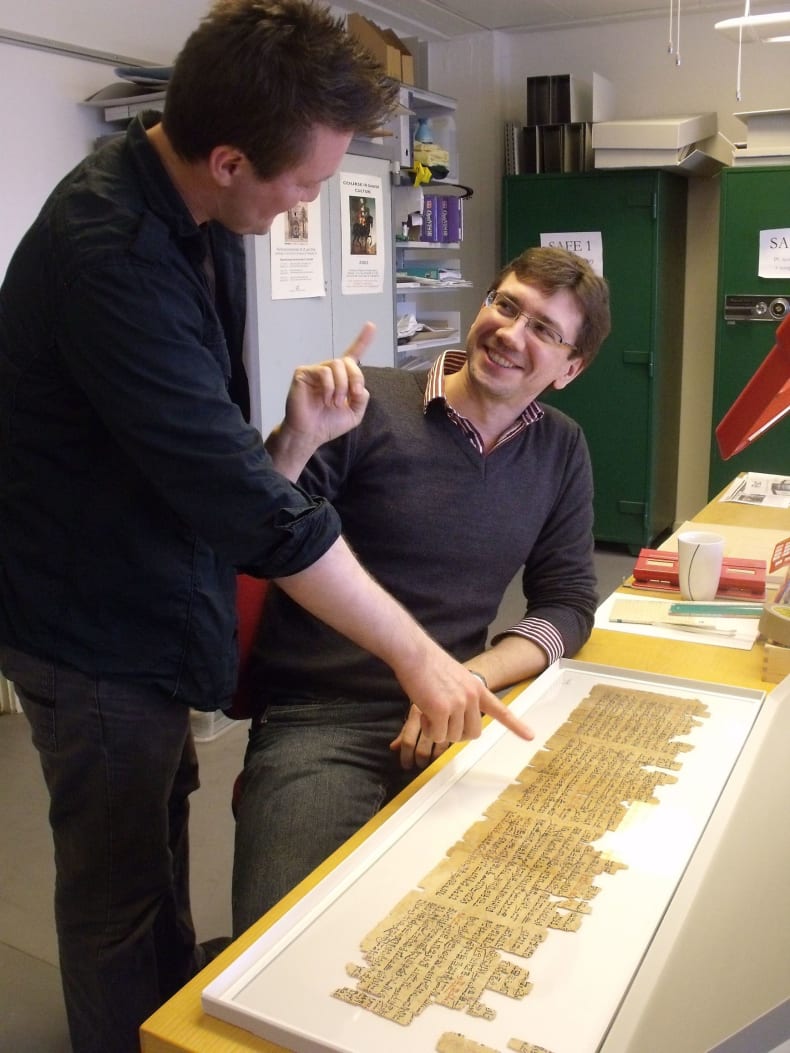
Fred Hagen (left) and Kim Ryholt discussing the Teaching of Merikare: one of the highlights of the collection (and one of the rare non-demotic texts!).
After this, the main job is to work on the editions of these texts, on the basis ofthe high quality images provided me, and, once these are in an almost-finished state, to arrange my second week-long visit and collate the text, ready for their publication!"
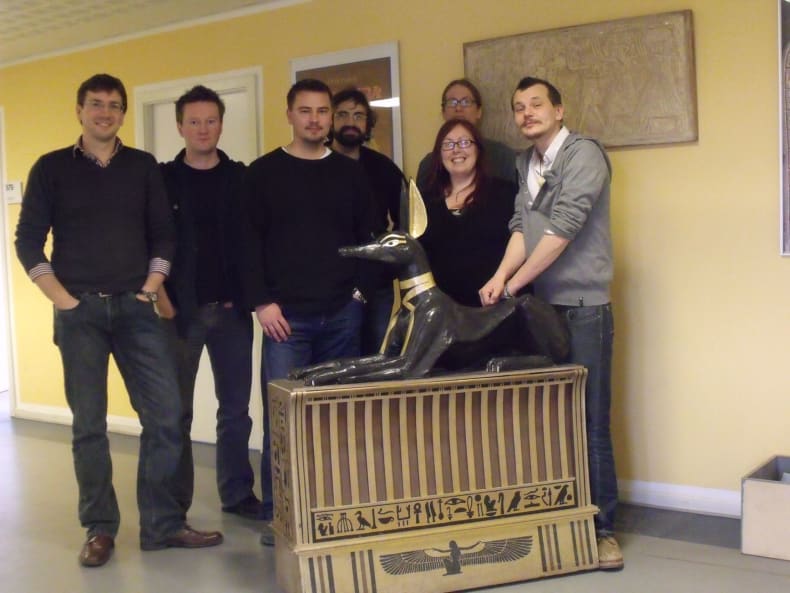
Jenny (second from right) with members of the Centre for Canon and Identity Formation in the Carsten Niebuhr Institute of Near Eastern Studies. From left to right: Kim Ryholt (Director), Fred Hagen, Rune Olsen, Hratch Papazian, Jonathan Telley, Thomas Christiansen.

